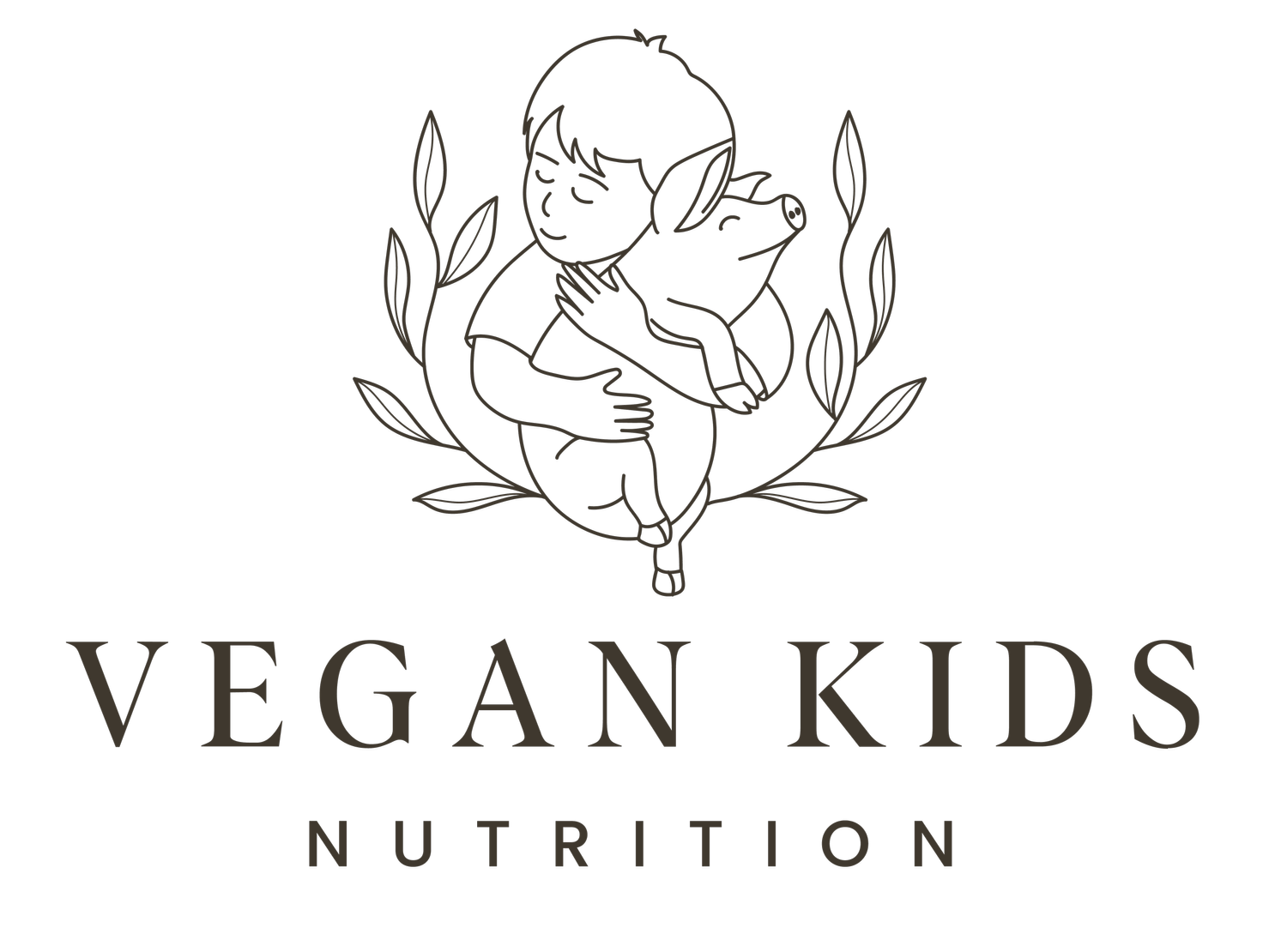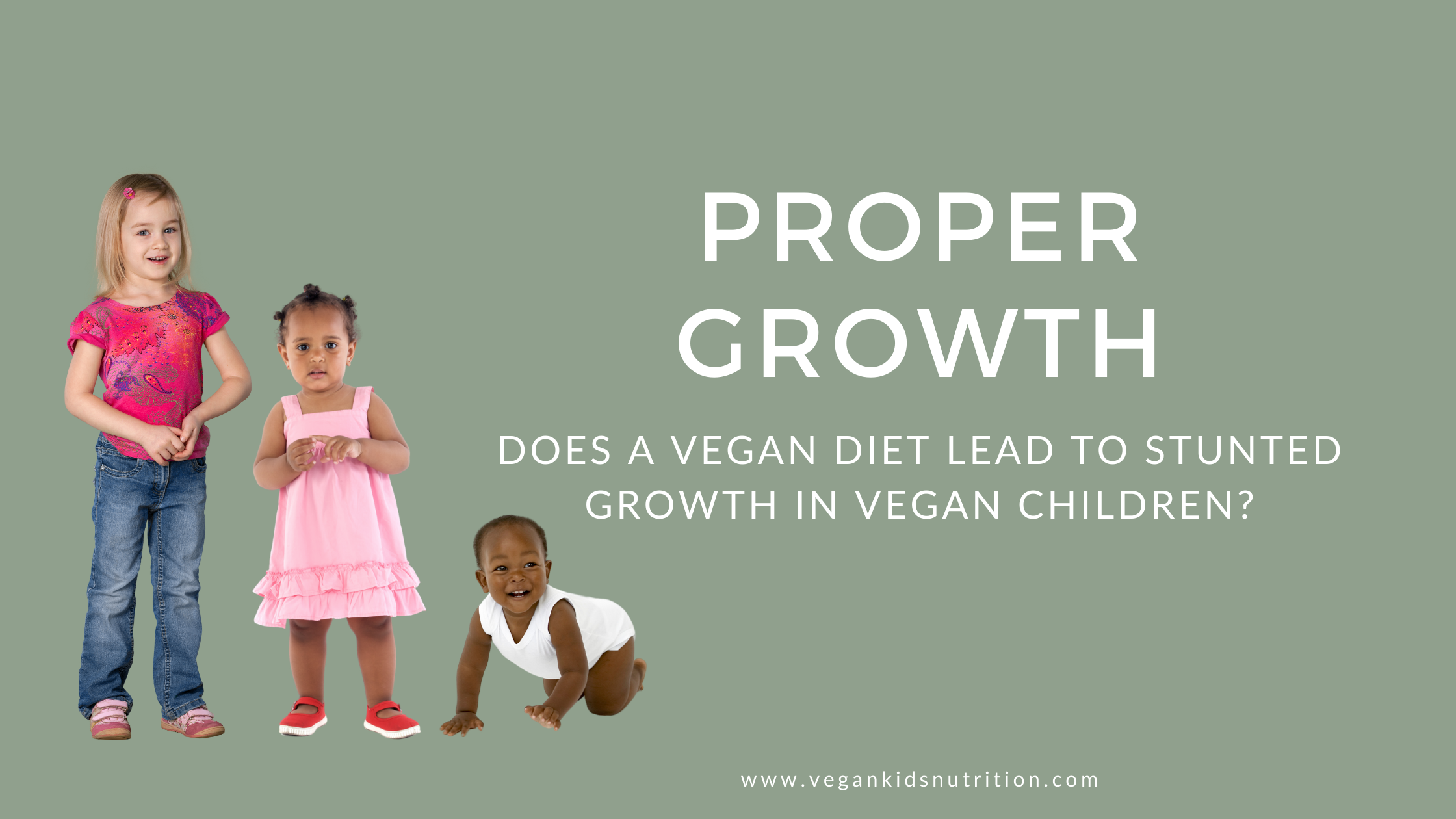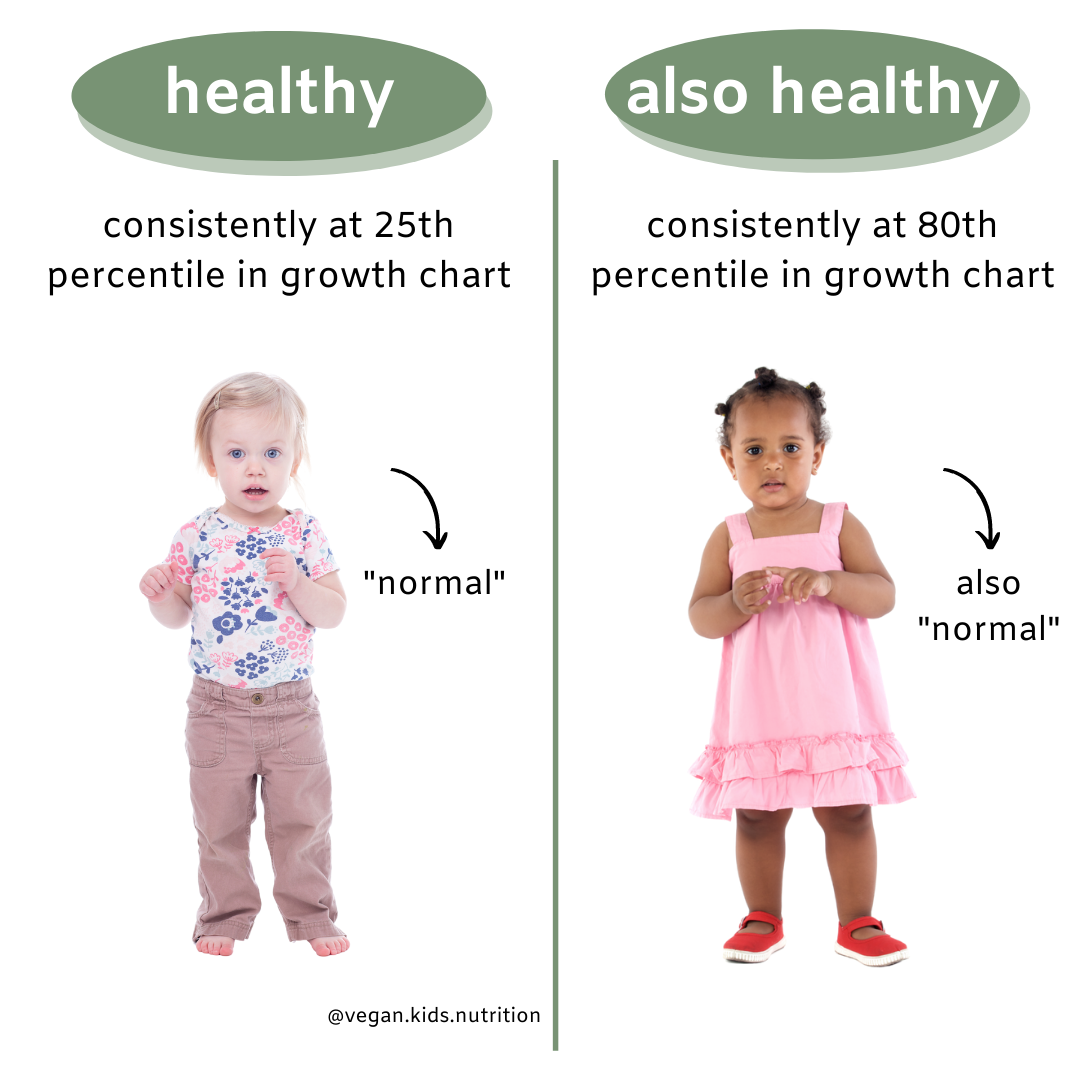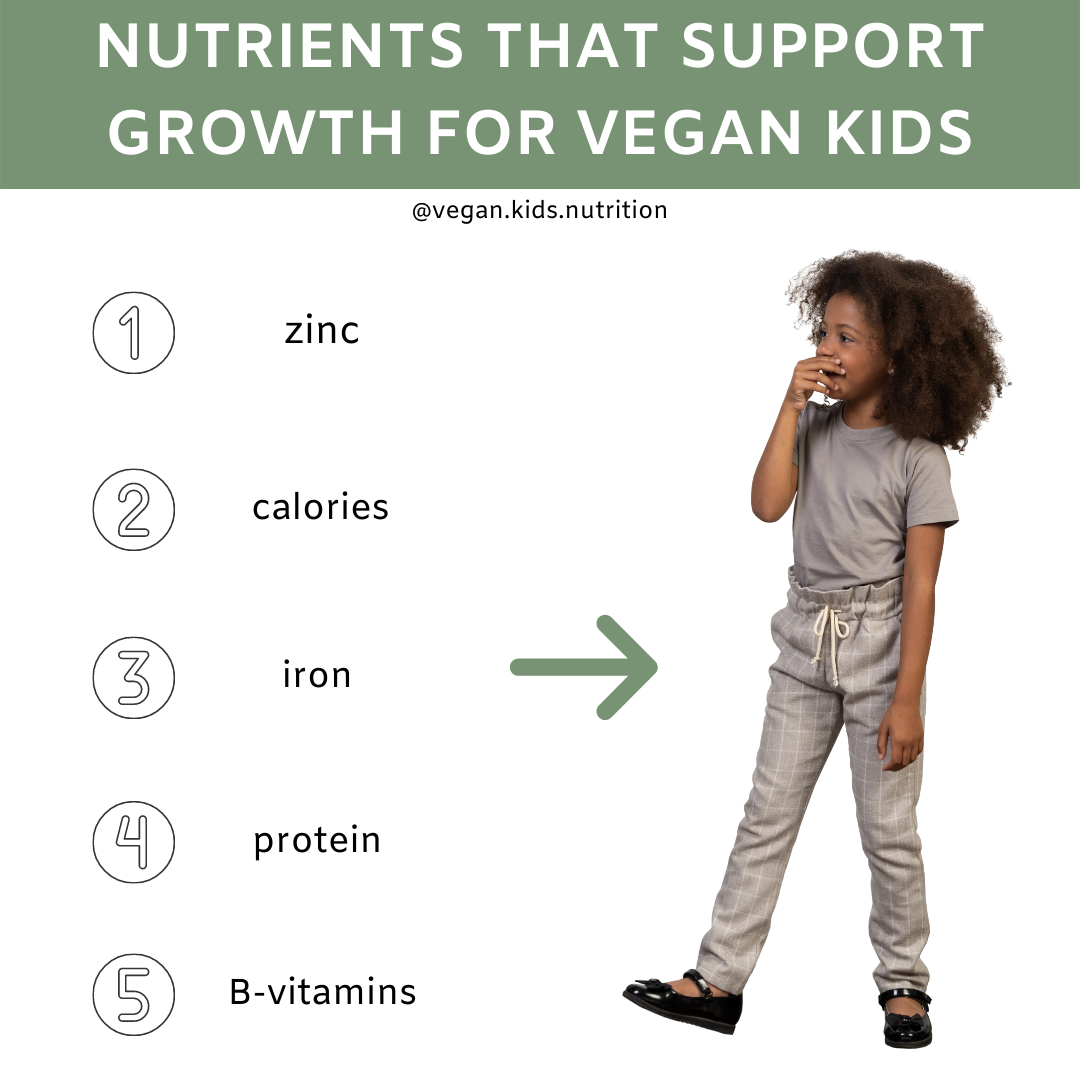During your vegan family journey, you may have come across articles that warn parents about how a vegan diet may impact a child’s growth and development, specifically their height.
Many vegan parents often reach out to me very concerned and worried about how their choice in raising their baby, toddler, and/or child vegan may lead to them having stunted growth.
This worry and fear often stems from what you hear from others, saying that certain foods like soy foods or a diet that doesn’t include meat is harming your child, leading your child to be shorter or weighting less than peers not on a vegan diet.
And while I can understand this bringing fear and uncertainty, it is completely untrue that a well-balanced and supplemented vegan diet leads to vegan children having stunted growth. When you provide adequate nutrition, foster healthful eating habits, and supplement your child, a vegan diet alone does not lead to your child being shorter in height.
What affects growth and height in children?
Before we dive into the science behind answering the question of whether a vegan diet leads to stunted growth, let’s understand the background of what plays a role in a child’s overall growth, including height.
There are many factors that play a role in your child’s height, such as (5):
Genetic material or DNA
Family History
Nutrition
Hormones
Genetic or other health conditions
And still, there are variations within each of those categories mentioned above. For example, a child who may be considered overweight for their age may be taller than their peers but that does not necessarily mean that they will be tall once they are adults. Children who may have a certain thyroid condition may experience slower growth but that doesn’t necessarily indicate they will have stunted growth throughout their childhood. And it certainly does not mean that the use of soy foods like tofu is the root cause of slower growth than expected.
Truly, the primary predictor of a child’s height is genetic (5). A child with tall parents will likely end up growing to be a tall individual as well. If you’re curious to know about your child’s predicted height, your pediatrician may help provide this answer for you by assessing your own height and childhood growth pattern. My husband and I asked at my daughter’s 2 year old visit and after a few plotting points on her growth chart, our pediatrician shared where her height will be compared to ours. It was fun to see!
Growth Charts
Alright, now that we figured out what plays a role in your child’s height, let’s talk about the growth charts that are currently being used in your child’s well-child visits.
USA healthcare providers primarily use two growth charts (2):
World Health Organization (WHO) - which has set growth standards for infants and young toddlers ages 0 - 2 years old. Data used to set these standards were based on healthy breastfed infants from several different countries.
Center for Disease Control and Prevention (CDC) - which are geared for 2 years and older.
I want to point out that the use of growth charts are not intended to be the only tool to determine a child’s growth and development, rather it’s used in conjunction with other factors that your child’s pediatrician uses to determine an overall assessment. For example, they may look at whether your child is meeting other developmental milestones, you and your partner's height, whether they were born prematurely, or other signs that may point to your child's overall growth.
Within the use of growth charts, there are also other considerations to look for. For example, girls and boys each are measured on their respective gender growth chart since they grow differently, at different patterns and at different rates as well. Typically, boys growth chart are colored blue and girls growth chart are pink.
It’s important to use the correct growth chart for your child’s age and gender, and that they are measured correctly. I remember when my daughter was going in for her 2 year well-child visit, her height appeared as if she had grown a lot. That clearly seemed suspicious but I attributed it to (a) measured incorrectly and (b) she was measured standing up because she did not want to lay down and (c) her growth was plotted on a CDC growth chart versus the WHO growth chart.
I want to point out that around this age, it is somewhat typical for your child’s height to appear inconsistent. This is because they are transitioning growth charts, moving from the WHO growth chart to the CDC growth chart, and the start of measuring height. The length (where they are measured laying down before the age of 2) tend to be a bit greater than height (when they are measured standing up sometimes but usually begins at 3 years old). Always speak to your healthcare provider if you have questions or would like for your vegan child to be re-measured.
What is a normal growth rate?
The growth of each child is unique to them. That means that the weight and height of your vegan child will be unique to them. And because of that, a wide range of growth percentiles may be considered “normal” (3). It just depends on your own child’s individual growth pattern to determine what percentile is considered “normal” for them.
For example, a child who is in the 25th percentile consistently for a long period of time would be considered to grow in a “normal” pattern for them. The same as a child who is consistently at or around the 80th percentile. One doesn’t always necessarily mean unhealthy or healthy. Both of these percentiles may be considered “normal” for a child if that’s where their growth has been hanging around for awhile. It becomes a red flag when a child suddenly drops from their “normal” growth pattern. If it does happen, your healthcare provider will ask questions to determine why this may have happened.
Do vegan diets lead to shorter height in children?
Infants and young children who follow a well-balanced vegan diet grow normally. There is plenty of evidence these days that vegan kids grow adequately if their diets consist of adequate nutrition, a variety of plant foods in their diet, and include appropriate supplementation at each stage of their growth.
Many articles we see that report growth of vegan children leading to slower or stunted growth than their peers who do not consume a vegan diet end up telling parents that a vegan diet is not safe, it’s unhealthy, and it will lead to nutrient deficiencies. However, when we examine these studies more closely, we see that headlines and articles are misleading when they conclude that a vegan diet is unhealthy for a growing child.
This is because studies who report slower or stunted growth on children who follow a vegan diet end up being conducted on children who were receiving inadequate nutrition (1). Some of these studies were conducted in the 1980s and early 1990s in British and Netherland children. Majority of these children were those who were following a macrobiotic diet—or more commonly known as a raw vegan diet.
These diets lacked calcium, zinc and Vitamin D which overall help support a child’s overall linear growth (1). Children who followed a raw vegan diet overall consumed calories, calcium, and Vitamin D well below the recommended amounts which may have accounted for a slower growth (6). We know that these nutrients like calcium and Vitamin D are essential for maintaining normal bone growth throughout childhood. In addition, these studies observed differences in growth (or height) more prevalent to be among boys than girls between the ages of 2 - 4 years old (1, 6). It’s likely due to the nutrition received rather than gender.
For infants, their slower growth was attributed to either that the mother was not consuming adequate energy while breastfeeding, receiving inadequate nutrition once solid foods were introduced, or they were fed a homemade formula. I want to point out here that a homemade infant formula should not be offered to an infant at any time. It does not provide the adequate nutrition an infant needs to support their growth and it is highly discouraged for any family to use a homemade infant formula.
While weight of vegan children is comparable to that of non-vegan children, it has been observe that even those with slower linear growth tend to catch-up to their peers around the preschool age (1,7). In the United States, the most well-known study of vegan children is known as the “Farm Study” which was published in 1989 overseeing a total of 400 children in Tennessee. While they did observe young children between the ages of 1 - 3 years old having shorter stature compared to non-vegan children, they noticed that this did not continue past the age of 5 years old (4).
This may be due to growth charts being used that were based on formula-fed infants at the time and majority of infants and children in this study were breastfed (7). Growth chart standards were updated in 2006, well after this study was published, to reflect optimum growth where data from healthy breastfed infants was used (3).
And perhaps this gives us another explanation for why other studies observed similar outcomes, where growth markers for vegan children were compared and derived on standards for children who were bottle fed (7). And children in these studies were largely breastfed well until 2 years old or longer. Hence, why we see a catch-up growth rate around their preschool years.
What should your meal plan focus on for your vegan children?
While there is such a thing as an inadequate and an adequate vegan diet, children who are fed a well-balanced and supplemented vegan diet end up growing adequately—which is a consistent observation from many studies who follow growth patterns and diets of vegan children.
So, yes, a vegan diet is healthy, safe, and perfectly acceptable as a dietary pattern to support the growth and development of infants, toddlers, and children.
The key is to ensure that proper attention is given to your child’s meal planning to ensure that adequate nutrition is offered throughout each stage of growth.
For that reason, I highly encourage parents who are raising their children vegan to focus on the following:
Adequate energy (or calories)
Variety of calcium-rich plant foods (take a look at this blog post for ideas)
Supplementation (Vitamin B12, Vitamin D, Iodine)
A variety of plant foods (grains, legumes, fruits, vegetables, nuts, and seeds)
Fostering healthful eating habits
When your meal planning focuses on these 5 foundational elements, you ensure that your vegan child is getting what they need to support their overall growth and development. You can learn more about these in episode 10 of the VKN podcast.
Feel Confident Feeding Your Vegan Kids
Join the Vegan Kids Nutrition Blueprint program that walks you step-by-step on how to ensure you provide everything your child needs to grow and develop properly on a vegan diet.
References
Dwyer, J. T., Andrew, E. M., Berkey, C., Valadian, I., & Reed, R. B. (1983). Growth in “new” vegetarian preschool children using the Jenss-Bayley curve fitting technique. The American Journal of Clinical Nutrition, 37(5), 815-827. doi:10.1093/ajcn/37.5.815
Growth Charts - Homepage. (2010, September 09). Retrieved from https://www.cdc.gov/growthcharts/index.htm
Mangels, Reed (n.d.). Retrieved from http://plant-based-diet.gentlebarn.org/posts/how-to-feed-kids-a-plant-based-diet.html
O'Connell, J.M., Dibley, M.J., Sierra, J., Wallace, B., Marks, J.S., Yip, R. (1989). Growth of vegetarian children: The Farm Study. Pediatrics, 84(3):475-81. PMID: 2771551.
Predicting a Child's Adult Height. (n.d.). Retrieved from https://www.healthychildren.org/English/health-issues/conditions/Glands-Growth-Disorders/Pages/Predicting-a-Childs-Adult-Height.aspx
Sanders, T. A. (1988). Growth and development of British vegan children. The American Journal of Clinical Nutrition, 48(3), 822-825. doi:10.1093/ajcn/48.3.822
Shah, R., Davis, B. (2020). Nourish: The Definitive Plant-Based Nutrition Guide for Families--With Tips and Recipes for Bringing Health, Joy, and Connection to Your Dinner Table. Health Communications, Incorporated.




